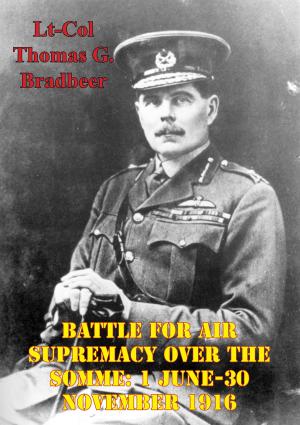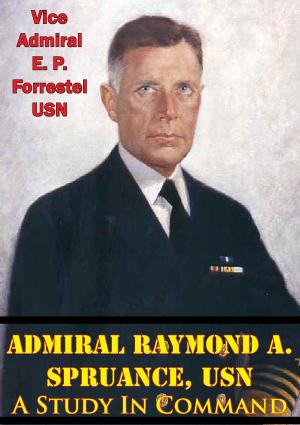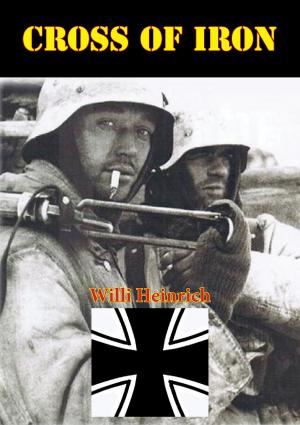Specialized Assault Units Of The World War I Western Front:
A Comparative Study Of The German Stormtrooper Battalions, And Canadian Trench Raiders
Nonfiction, History, Military, World War I, Germany, British| Author: | Major Christopher J. Ghiz | ISBN: | 9781782897842 |
| Publisher: | Verdun Press | Publication: | August 15, 2014 |
| Imprint: | Verdun Press | Language: | English |
| Author: | Major Christopher J. Ghiz |
| ISBN: | 9781782897842 |
| Publisher: | Verdun Press |
| Publication: | August 15, 2014 |
| Imprint: | Verdun Press |
| Language: | English |
This thesis will use a comparative study of the German Storm trooper battalions and the Canadian trench raiders in order to examine the dynamics of the World War I battlefield, the role of military culture in adaptation in order to acknowledge and act on the requirements of battlefield innovation. The purpose is to determine what key factors contributed to the tactical effectiveness of specialized assault units on the Western Front. The military cultures of these armies comprised the logical and innovative principles that were fundamental in the tactical effectiveness of these elite assault units by making revolutionary developments in force structure, institutional support, personnel selection, decentralized leadership, and training on small-unit tactics and advanced weaponry. Did these tactics create similar or different effects for each army? What factors did these armies use to organize and employ these assault units? To answer these questions, several areas will be examined: (1) force structure, (2) institutional support, (3) personnel selection, and (4) training on decentralized leadership, small unit infiltration tactics, and advanced weaponry. Both armies had different backgrounds and situations. The German Army’s Sturm battalions represented an army-wide institutionalization of organization, selection and technique. The Canadian Corps’ trench raiders were based on the Canadian Corps’ homogeneous structure that separated itself from the BEF in developing its own doctrine, training schools, organization, and tactical innovations.
This thesis will use a comparative study of the German Storm trooper battalions and the Canadian trench raiders in order to examine the dynamics of the World War I battlefield, the role of military culture in adaptation in order to acknowledge and act on the requirements of battlefield innovation. The purpose is to determine what key factors contributed to the tactical effectiveness of specialized assault units on the Western Front. The military cultures of these armies comprised the logical and innovative principles that were fundamental in the tactical effectiveness of these elite assault units by making revolutionary developments in force structure, institutional support, personnel selection, decentralized leadership, and training on small-unit tactics and advanced weaponry. Did these tactics create similar or different effects for each army? What factors did these armies use to organize and employ these assault units? To answer these questions, several areas will be examined: (1) force structure, (2) institutional support, (3) personnel selection, and (4) training on decentralized leadership, small unit infiltration tactics, and advanced weaponry. Both armies had different backgrounds and situations. The German Army’s Sturm battalions represented an army-wide institutionalization of organization, selection and technique. The Canadian Corps’ trench raiders were based on the Canadian Corps’ homogeneous structure that separated itself from the BEF in developing its own doctrine, training schools, organization, and tactical innovations.



![Cover of the book Of Rice And Men [Illustrated Edition] by Major Christopher J. Ghiz](https://www.kuoky.com/images/2015/november/300x300/9781786253255-tQ9N_300x.jpg)








![Cover of the book The Dyess Story - The Eye-Witness Account Of The DEATH MARCH FROM BATAAN [Illustrated Edition] by Major Christopher J. Ghiz](https://www.kuoky.com/images/2014/august/300x300/9781782892694-WHns_300x.jpg)
![Cover of the book JAPANESE IN BATTLE 2nd Edition [Illustrated Edition] by Major Christopher J. Ghiz](https://www.kuoky.com/images/2014/august/300x300/9781782896197-Sd8R_300x.jpg)
![Cover of the book FLYING FURY: Five Years In The Royal Flying Corps [Illustrated Edition] by Major Christopher J. Ghiz](https://www.kuoky.com/images/2014/june/300x300/9781782892168-Eheb_300x.jpg)
![Cover of the book Staff Ride Handbook For The Attack On Pearl Harbor, 7 December 1941 : A Study Of Defending America [Illustrated Edition] by Major Christopher J. Ghiz](https://www.kuoky.com/images/2014/august/300x300/9781782894513-K1Ik_300x.jpg)